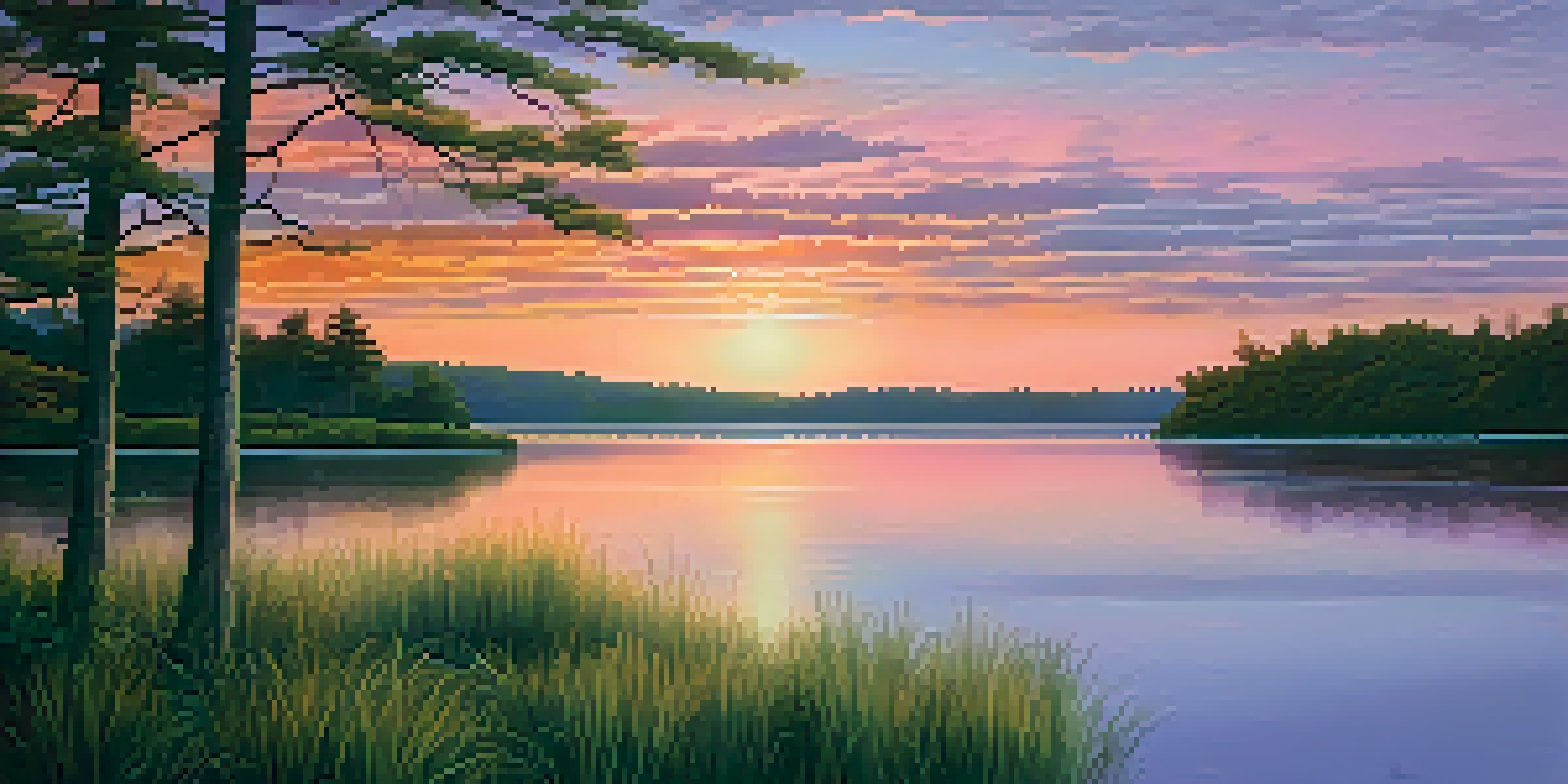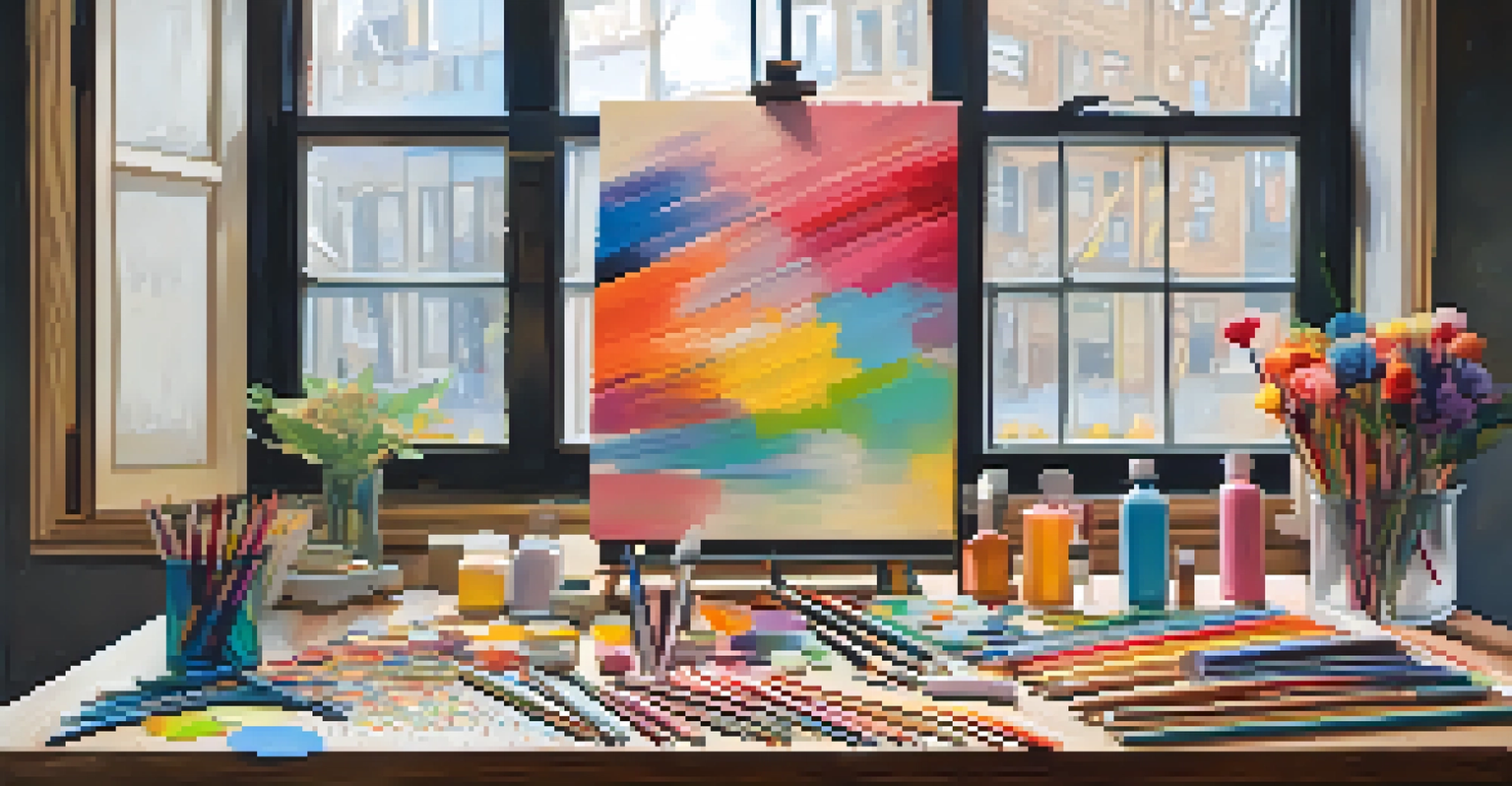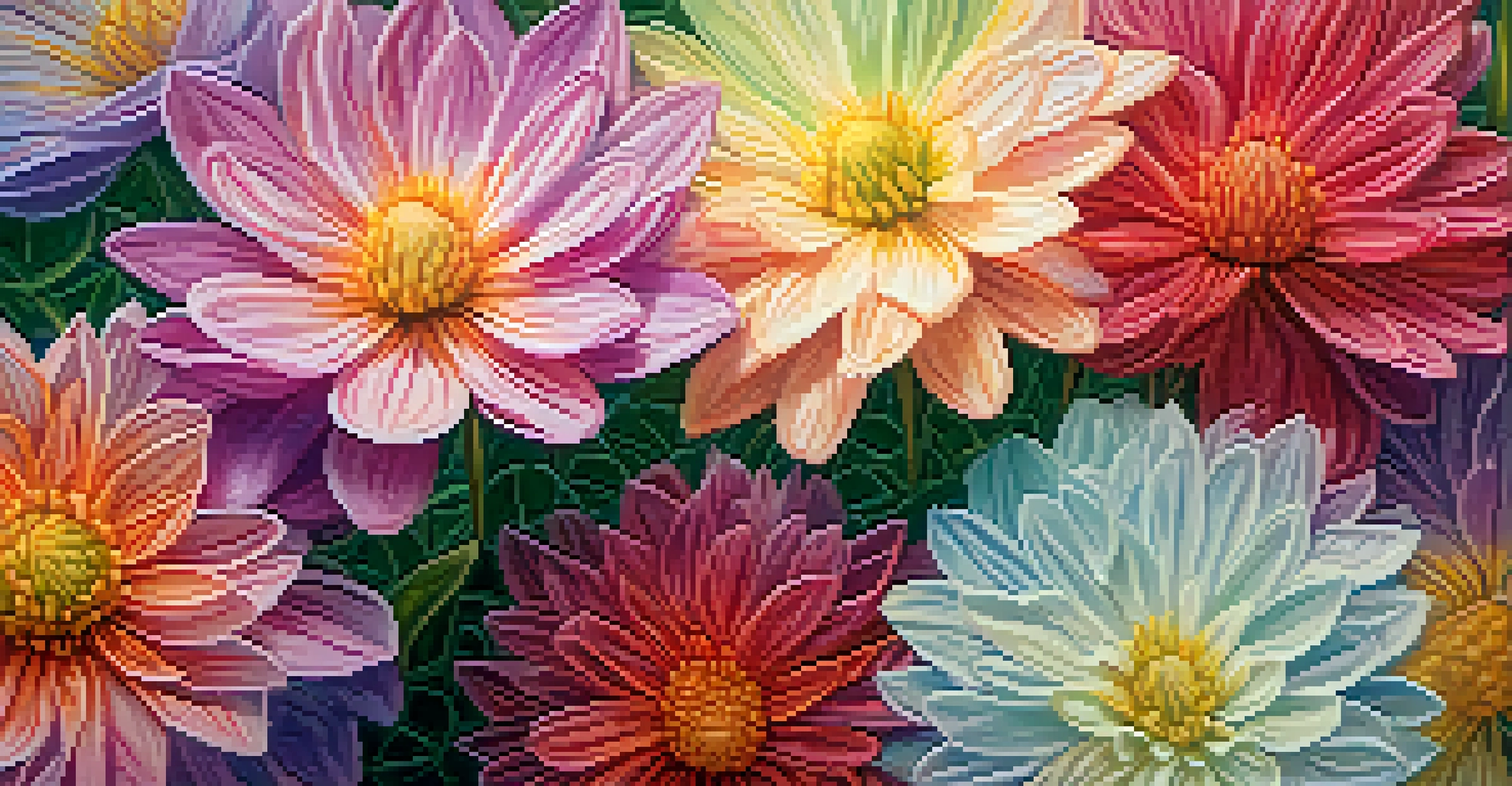Pastel Techniques: Blending, Layering, and Creating Texture

Understanding Pastels: Types and Basics of Technique
Pastels come in various forms, each offering unique qualities for artists. The main types include soft pastels, oil pastels, and hard pastels, which differ in texture and application. Soft pastels are known for their vibrant colors and blendability, while oil pastels offer a creamy consistency and rich hues.
Art is not freedom from discipline, but disciplined freedom.
Before diving into blending and layering techniques, it's essential to understand the medium you're working with. Each type of pastel behaves differently, influencing the outcome of your artwork. Experimenting with these options can help you discover your preference and style.
Related Resource
Getting comfortable with pastels begins with basic techniques, such as how to hold them and apply them to paper. This foundational knowledge sets the stage for more advanced methods like blending and layering, which are key to creating depth and texture in your art.
The Art of Blending: Techniques for Smooth Transitions
Blending is a crucial technique that allows you to create smooth transitions between colors in your pastel artwork. There are several methods for blending, such as using your fingers, a blending stump, or even a soft cloth. Each method has its own effect, so don't hesitate to try them all to find what works best for you.

One popular approach is the finger blending technique, where you gently smudge the pastels together. This method offers a natural feel, allowing you to control the degree of blending. Just remember to keep your fingers clean to avoid muddying your colors.
Explore Different Pastel Types
Understanding the unique qualities of soft, oil, and hard pastels can help you find the right medium for your artistic style.
Another effective blending tool is the blending stump, which is often used for more detailed areas. This small, cylindrical tool provides precision while still allowing for soft transitions. Experimenting with different blending techniques can lead to unique textures and effects in your artwork.
Layering Techniques: Building Depth in Your Artwork
Layering is a vital technique in pastel painting that adds depth and dimension to your work. By applying multiple layers of color, you can create richness and complexity that a single layer simply can't achieve. Start with a light base layer before gradually adding darker or more vibrant colors on top.
Color is the keyboard, the eyes are the harmonies, the soul is the piano with many strings.
As you layer, remember to allow each layer to set before adding another. This helps prevent the colors from becoming muddy and maintains clarity in your artwork. Patience is key here, as building depth takes time and care.
Related Resource
Additionally, consider the order in which you apply your layers. Lighter colors generally go first, followed by darker shades. This will not only maintain the brightness of your artwork but also create a more harmonious blend of colors.
Creating Texture: Techniques for Dynamic Surfaces
Texture can elevate your pastel artwork, making it visually interesting and engaging. Techniques like sgraffito, where you scratch into the surface to reveal underlying layers, can create striking effects. This method adds a sense of depth and invites viewers to explore your artwork further.
Another way to create texture is by varying your pressure as you apply the pastels. Heavy pressure can yield bold, vibrant marks, while lighter pressure results in softer, more delicate lines. Combining both approaches can add dynamic contrast to your piece.
Master Blending and Layering
Effective blending and layering techniques are essential for adding depth and richness to your pastel artwork.
Don't forget the power of the paper you choose! Textured or rough surfaces can enhance the effects of your pastels, making your colors pop while also contributing to the overall texture of the artwork. Experimenting with different types of paper can lead to surprising results.
Color Theory: Choosing the Right Colors for Blending
Understanding color theory is crucial when blending pastels to achieve desired effects. The color wheel is a helpful tool for finding complementary colors that can enhance your artwork. By choosing colors that sit opposite each other on the wheel, you can create vibrant contrasts that make your work stand out.
Additionally, consider the psychological impact of colors. Warm colors like reds and yellows evoke energy and warmth, while cool colors like blues and greens can impart calmness and serenity. This understanding can help you select colors that convey the mood you want in your artwork.
Related Resource
Experimenting with color combinations is key to mastering blending techniques. Don't be afraid to try unconventional pairings; sometimes, the most unexpected colors create the most stunning effects. Keep a swatch book to test and document your favorite blends for future reference.
Common Mistakes: What to Avoid When Using Pastels
When starting with pastels, it's easy to make a few common mistakes that can hinder your progress. One frequent issue is over-blending, which can lead to muddy colors and loss of vibrancy. Remember that sometimes a little texture and separation in your colors can enhance the overall effect.
Another mistake is using the wrong type of paper. Pastels require a toothy surface to hold the pigment effectively. Using smooth paper can result in frustration, as the pastels may slide off instead of adhering properly. Always opt for specialized pastel paper for the best results.
Find Inspiration Everywhere
Inspiration for pastel art can be drawn from nature, photography, and online communities to ignite creativity.
Lastly, don't rush the process. Patience is vital when working with pastels, especially when layering and blending. Allow yourself the time to experiment and learn, and your skills will naturally improve as you practice.
Inspiration: Where to Find Ideas for Your Pastel Art
Finding inspiration for your pastel artwork can come from many sources, whether it's nature, photography, or other artists. Take a walk outside or browse through a photo album for scenes that capture your interest. The vibrant colors and textures in nature can be particularly motivating for pastel artists.
Another great source of inspiration is online platforms like social media and art forums. Joining groups dedicated to pastel art can expose you to new techniques and styles, sparking your creativity. Don’t hesitate to share your work with others; feedback can be invaluable.

Lastly, consider setting up a dedicated art journal. Use it to sketch ideas, jot down color combinations, or even experiment with new techniques. Having a space to explore your thoughts can lead to unexpected breakthroughs and keep your creative juices flowing.